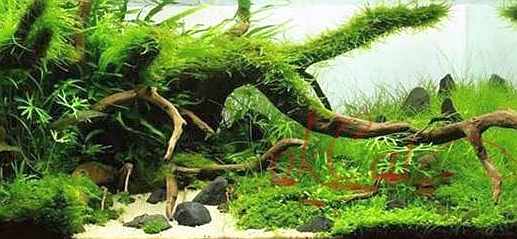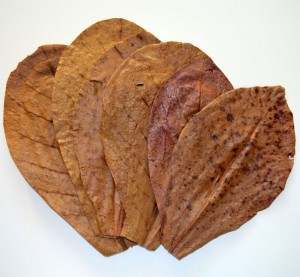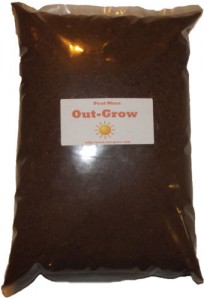There are three easy ways to lower the pH in your tank without adding chemicals that may harm your fish.
Many tropical fish keeping enthusiasts purchase fish from their local pet shops and find them lying on the bottom of the tank a few days to weeks later for no apparent reason.
Assuming that the tank has already gone through its cycle, the main culprit can usually be identified as too high or too low a Ph level for the fish you are trying to keep.
South American cichlids, loaches, and catfish are usually the fish most affected, but other species from Southeast Asia also suffer from this problem.
Fortunately, the following methods will slowly buffer the water in your tank and gently lower the pH without using harsh chemicals that can raise or lower the pH too quickly.
Adding a piece of driftwood or bogwood to your tank will gently lower the pH level in the system naturally over a matter of days to weeks.
The driftwood acts as a filter to remove contaminants and buffer the tank water. The only drawback to this method is that initially, the wood leaches tannic acid into the tank water and gradually gives the water a light brownish tinge.
The water color has no affect on the fish, in fact many species prefer living in stained water conditions however, this can be minimized by pre-soaking the wood before placing it into the tank.
If you purchase driftwood from a tropical fish shop or online; completely submerge the wood in a plastic container for a couple of weeks before introducing it into your tank. This will reduce the amount of stain that leaches into the water, but it also somewhat reduces the effectiveness of the entire process.
Some people recommend boiling the wood before soaking to sterilize it. This practice is fine if the wood has not already been submerged, like bogwood or collected in the wild from a local stream.
Some species of Loaches and Plecostomus eat the microorganisms that that grow on the wood, and several species actually eat the wood itself. Boiling the bogwood partially defeats the benefits of using it in your tank for these fish.
Be careful about where you purchase the driftwood for your tank. For aesthetic purposes, some suppliers add chemicals to the wood that can kill your fish. These types of driftwood are mostly used for reptile and amphibian terrariums.
The best and cheapest way to add driftwood to your tank is to collect it yourself form your local creek, stream, or lake.
Make sure the wood is already submerged when you pull it from the water. If there is too much mud or grime on the wood, rinse it off or use a pressure washer to lightly clean off the piece and then add it to your tank.
- Indian Almond Leaves
(Catappa)
Tropical fish keeping enthusiasts have been using Catappa, or Indian Almond Leaves for Blackwater aquariums and as a “poor mans water conditioner” for years.
The Almond leaves lower the pH of the water and soften it. Like driftwood and some bogwood, Almond
leaves also release tannins into the tank water, however these natural chemicals actually prevent and cure fish diseases. The tannins act as an antioxidant and anti inflammatory and are generally recognized as a natural health aid or tonic for many “blackwater” aquarium fish.
Most people soak the almond leaves in water to release the tannins prior to adding the leaves to their tank. Although this will keep the water in your tank less stained, it also reduces the effectiveness of the leaves.
Place the dried leaves in a 5 gallon bucket until they become water logged and sink to the bottom. This takes about a couple of days, then add them to your tank.
In their natural habitat, many South American tropical fish live among submerged leaves on the bottom of tannin colored streams, ponds and lakes with lots of natural clutter. These fish thrive with the addition of leaves in the tank and prefer living in tannin stained waters. The stained water also bring out the colors in these fish.
Like driftwood, you can purchase Catappa from tropical fish shops, online, or collect local leaves yourself.
Over time the leaves will break down in your tank. You do not need to remove the broken down leaves from your aquarium. They will not harm your fish and when they have broken down altogether, you can just add more leaves.
Some species of leaves will take longer to break down than others. Indian Almond Leaves break down in three to four months. Oak and Beech leaves will last at least twice as long. Some leaves produce more tannins than others, so some experimentation is necessary.
Peat moss is another way to naturally lower the pH in your aquarium, but peat moss will also discolor your tank water.
Except for some species of Killifish, the best way to use peat moss is through your outside filtration system.
Place some peat moss in a filter bag, a clean sock, or a piece of women’s panty hose in your canister filter, an outside filter, or inside the sump of your trickle filter.
The peat moss acts as a second “media filter” and as the tank water flows through the peat, it gradually lowers the pH in the tank.
Peat moss can be purchased in bags of various sizes, as pellets, or in chunks from
your local tropical fish shop or gardening store.
Some tropical fish keeping enthusiasts place a bag of peat moss in the corner of the tank until the proper pH is achieved. This method works well but distracts from the aesthetics of the aquarium.
Natural peat moss will give a yellowish brown tinge to tank water as the pH is lowered. Many tropical fish keeping enthusiasts recommend pretreating the peat moss in a separate bucket of water for a few days to reduce the amount of tinge before putting it into the filter system.
Soaking seems to work without diminishing the effectiveness of the buffering qualities of the peat.
Some trial and error may be needed to target the pH you want in your aquarium.
The amount of water changes you perform on your tank, how hard your water is, and how large a system you are treating all determines how much peat you will need to drop the pH to the level you are trying to achieve.
Regardless of which method you choose, it is always better to naturally lower the pH in your tank rather than using harsh chemicals that can alter the pH either too much or to quickly.
Store bought chemicals can result in drastic changes in water chemistry that can produce illness or death of your valued tropical fish.
The next time you need to alter the chemistry in your aquarium, try using these three easy ways to lower the pH in your tank the natural way.





